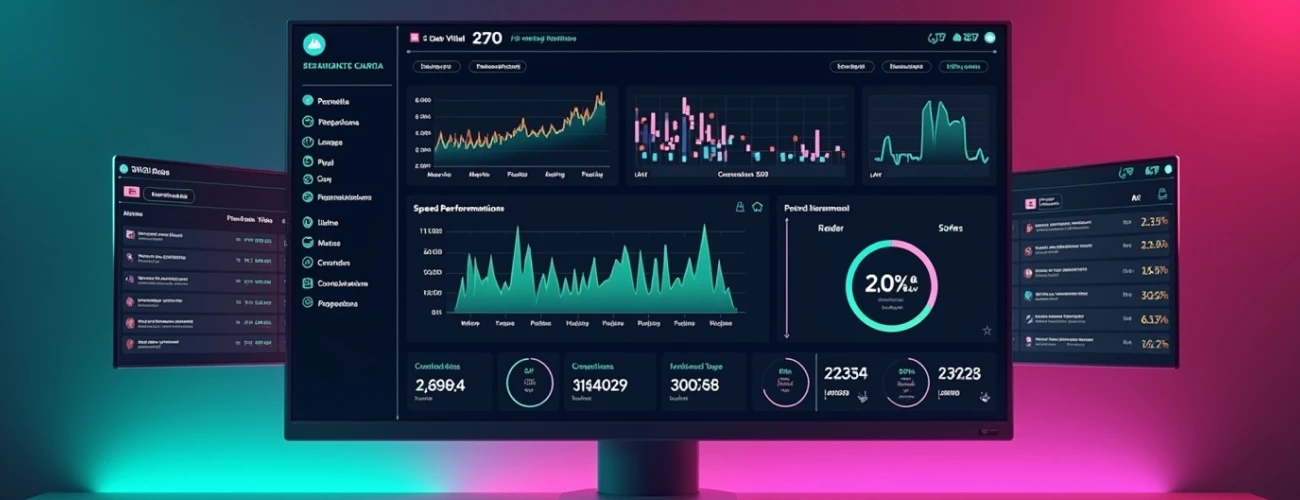Website speed and Core Web Vitals in 2025: what has changed

To make sure your resource reaches the TOP of search results, ensure that it meets the Core Web Vitals 2025 requirements, which focus on website loading speed, smoothness, and stability. This year, Google has updated its recommendations for these metrics. To optimize your site according to the new standards, you should definitely be aware of these changes.
Updated Google Metrics
Core Web Vitals are Google metrics that evaluate how user-friendly your website is, so they must be considered during website development. They show how quickly content loads, how smoothly elements respond to user actions, and how stable the page layout is.
In 2025, Google updated these metrics by adding new parameters and changing evaluation priorities to more accurately reflect real user experience. The focus is now on real-world performance, making them even more important for SEO.
INP (Interaction to Next Paint)
This metric was introduced earlier, in March 2024, but it’s still worth mentioning. It measures a page’s responsiveness across all significant user interactions — clicks, scrolling, and typing. Thanks to this, INP accurately determines how quickly a website responds to visitor actions. For a comfortable user experience, INP should be below 200 milliseconds.
LCP
Largest Contentful Paint still measures how fast the main element appears on a page, but in 2025, important changes were made to how it’s calculated:
- new LCP candidates — now, not only images and text blocks are considered, but also videos and animated visuals; the time is recorded from the moment the first frame appears;
- loading priority — browsers now prioritize key elements (like large images) to speed up their rendering;
- improved accuracy — the logic for identifying the “final” LCP moment has been refined to avoid errors caused by animations or poster loading.
The optimal loading time for the main page content remains no more than 2.5 seconds, but with growing user expectations and competition, this benchmark may evolve.
CLS
Cumulative Layout Shift (CLS) measures how often and how much elements “jump” or shift during loading and interaction. High values frustrate users, as unexpected layout shifts can lead to misclicks and reduce trust. The target value is < 0.1.
What changed in 2025:
- focus on shift bursts — Google now evaluates only the most significant “session windows” where noticeable layout shifts occur, rather than every small movement; this makes scoring fairer and closer to real user experience;
- new recommendations — Google emphasizes that the main causes of poor CLS are images without defined dimensions, dynamic blocks (ads, widgets), and incorrect font loading;
- practical solutions — to improve CLS, always specify media dimensions, reserve space for banners, and set font-display properties for fonts;
- improved tools — in Search Console and PageSpeed Insights, the metric now highlights the “largest shift burst,” helping developers pinpoint problem areas more accurately.
If the interface “shakes,” visitors are more likely to close the page, and search engines will lower the site’s ranking. Therefore, controlling CLS is not only a UX issue but also a key SEO and conversion factor.

How to Check Your Website’s Metrics
To understand how well your site meets CWV standards, use the following tools:
- Google Search Console — shows which pages perform poorly and which perform well, divided by mobile and desktop versions;
- PageSpeed Insights — measures real-world and lab data; provides specific recommendations to improve loading speed, reduce CLS, and enhance interactivity;
- Lighthouse and Chrome DevTools — allow local page analysis; they help identify which scripts block loading, where long tasks occur, and what affects LCP, INP, and CLS, enabling you to take targeted action to improve performance;
- RUM (Real User Monitoring) — continuously tracks real user experience, taking into account geography, device model, and network speed.
When making changes, always rely on real-world metrics — they matter more than lab results.
Technical Ways to Speed Up (CDN, Lazy Load, Cache)
To improve website performance, consider these methods:
- CDN (Content Delivery Network) — delivers images, scripts, and styles from servers located as close as possible to the user; this speeds up site loading and reduces the main server’s workload;
- Lazy-load (deferred loading) — loads content below the visible area of the screen only when the user scrolls to it or opens the corresponding section; this method works well for images, videos, and heavy widgets; it helps improve LCP and reduce page load;
- caching — browser and CDN caching allows reusing resources already downloaded to the device, saving time and bandwidth.
The right combination of these techniques provides a noticeable boost — pages load faster, interface elements respond instantly, and the user experience becomes smoother. After optimizing speed, you should test results to ensure the changes have actually improved Core Web Vitals.
Impact on SEO and Conversions
Google considers Core Web Vitals in ranking algorithms. Although content still plays the most significant role, good CWV scores help maintain positions and give an advantage over competitors with poorer performance.
Keep in mind that:
- SEO and loading speed are closely related, as faster page loads reduce bounce rates and increase time spent on site;
- Case studies show that optimizing LCP, INP, and CLS directly affects conversions, sales, and customer retention; this effect can be tracked through A/B testing and RUM data.
To optimize your website according to Core Web Vitals best practices, contact the specialists at MEGASITE. We provide SEO promotion services in Kyiv and across Ukraine and develop solutions that align your resource with modern Google requirements, reduce bounce rates, and increase conversions.
Your project
Call/write:


